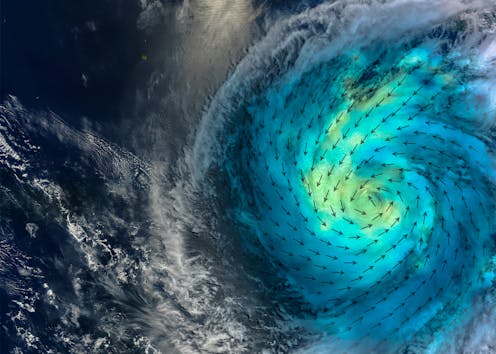who pays for climate action in developing nations – and how much – becomes more urgent
- Written by Nina Ives, PhD Candidate in Climate Change, Auckland University of Technology

This year’s United Nations climate summit, the Conference of the Parties (COP29) which starts in Azerbaijan this week, has been dubbed the “finance COP”.
Its key focus is on establishing a new collective goal for climate finance to help developing countries to reduce emissions and adapt to climate impacts.
Within the 2009 Copenhagen Accord, 43 developed countries, including the United States, pledged to jointly mobilise US$100 billion a year by 2020 to “address the needs of developing countries”. But this didn’t specify how much money each country should contribute, nor which proportion should be used to cut emissions or adapt to impacts.
It took until 2022 for countries to meet this goal, according to recent OECD assessments.
Most European countries have contributed significantly, but the US, Canada and Australia have been criticised for not paying enough, given their large economies. The reelection of President Donald Trump now makes future contributions from the US uncertain.
Recent research shows extreme weather is already costing vulnerable island nations US$141 billion each year. Estimates suggest this will rise to $1 trillion annually by 2030.
Sharing the burden of climate action
Channelling money towards climate actions is one way countries can contribute to tackling climate change in two broad categories:
Mitigation (preventing future greenhouse gas emissions to reduce further climate change)
Adaption (adjusting and preparing for the impacts of climate change).
But what might a fair distribution of climate finance between countries look like today? How much climate finance could countries be expected to contribute towards a shared goal? And do we have adequate means and information for answering such questions?
There are three burden-sharing principles commonly drawn on to answer these questions:
polluter pays means those who have caused the problem ought to clean it up
beneficiary pays means those who have benefited from actions which caused the problem ought to address it
ability to pay means those with the greatest financial means ought to contribute a bigger share.
Each principle reflects a different understanding of fairness.
All three of the above principles are linked to another principle which describes how countries bear different levels of responsibility for climate change in the past, and have variable capabilities for dealing with it in the present.
This principle has underpinned several international climate treaties, including the 2015 Paris Agreement and 1992 UN Framework Convention on Climate Change.
The beneficiary-pays principle is increasingly being referred to in discussions of how costs could fall for climate adaptation measures. For instance, coastal communities could be expected to pick up a significant proportion of the tab for a sea wall because they will derive the benefit from such infrastructure.
Principles of fair contribution
To apply these principles, information about countries’ circumstances is used to calculate fair climate finance distributions.
For instance, the ability-to-pay principle is often applied using metrics such as gross domestic product per capita and gross national income per capita, as well as the Human Development Index. All of these metrics provide indications of a country’s financial capacity for addressing climate change.
The polluter-pays principle is commonly applied using information about countries’ historical greenhouse gas emissions and land-use practices.
The results of applying these principles can vary significantly. A polluter-pays principle would place substantial financial burdens on large historical emitters, such as the US and China.
Conversely, wealthy countries with low populations and high gross national income per capita (such as Liechtenstein, Singapore or Qatar) could be expected to bear the highest climate finance burdens under an ability-to-pay principle.
For Australia, climate finance burdens would not vary substantially across different principles. But for Aotearoa, these would be significantly higher under the ability-to-pay than the polluter-pays approach.
These different distributions reflect perspectives on what constitutes a country’s fair climate finance burden.
Moral adequacy of countries’ pledges
Results of applying these principles cannot be expected to provide “right” answers to the questions stated above. They offer a means for better informing debate in the international community about possible fair distributions of climate finance.
This is helpful within the Paris Agreement, which requires each country to put forward a self-defined contribution to the global effort. But the agreement has no way of assessing these contributions from an ethical standpoint, despite considerations of fairness lying at the heart of burden-sharing conversations about climate finance.
It is worth reiterating this approach of applying ethical principles cannot deliver a single, determinate answer because climate finance distributions depend on different interpretations of fairness.
Nor should it be considered a way of settling debates about countries’ finance burdens, since fair climate finance distributions will continue shifting with time as countries’ circumstances change.
Ahead of discussions at COP29, exploring possible fair distributions of international climate finance could be helpful for scrutinising the moral adequacy of countries’ future pledges and their actual mobilising of efforts.
This, in turn, could support more nuanced and informed debate in the international community as nations grapple with ways to fairly address an increasingly urgent, ever-evolving global issue.
Authors: Nina Ives, PhD Candidate in Climate Change, Auckland University of Technology





